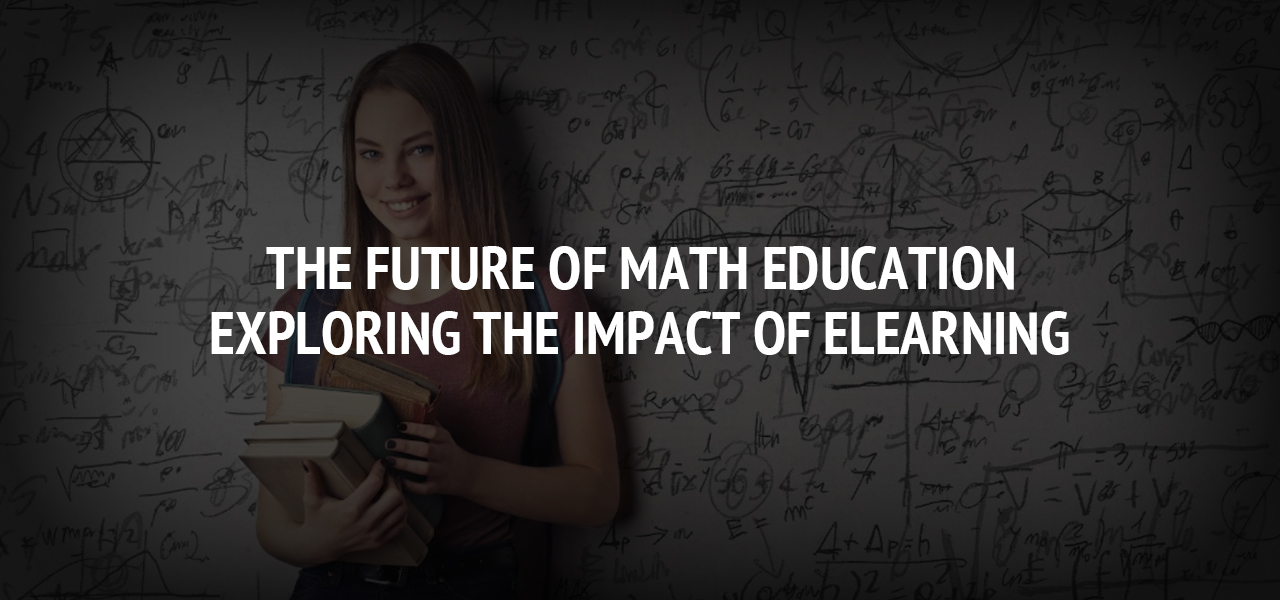The Future of Math Education: Exploring the Impact of eLearning

In the hallowed halls of traditional math education, chalk and blackboards once reigned supreme.
However, with the digital age swiftly cascading into every facet of our lives, the realm of math education is undergoing a seismic shift.
Enter eLearning, the trailblazing path that's redefining the future of how numbers, equations, and algorithms are taught.
1. The Rise of eLearning in Math Education
The Digital Shift
Picture this: It's 1995, and a student struggles with algebra.
Fast forward to today, that same concept is taught using an interactive app, breaking down the formula with vibrant visuals and instant feedback.
The profound digital transformation in math education is impossible to overlook.
No longer limited to textbooks and paper assignments, tech-driven education platforms now offer immersive experiences.
Benefits of eLearning for Math
eLearning isn't just a flashy term; its roots are anchored in tangible benefits.
Imagine a student in Phoenix. Confused about calculus, they turn to online math tutoring Phoenix-based platforms for clarity.
They’re treated to personalized lessons, adjusting to their pace, ensuring they grasp concepts before advancing.
The power of real-time feedback, coupled with interactive tools, revolutionizes understanding.
It's as if every student has a personal tutor at their fingertips, ready to guide them through every quadratic and theorem.
2. The Role of Gamification in Math eLearning
Understanding Gamification
At its core, gamification weaves game mechanics into learning, striving for that sweet spot between fun and education.
For a subject like math, where abstract concepts can often feel daunting, gamification is a beacon of hope.
Benefits in Math Education
Remember the age-old frustration with geometry?
Through gamified apps, those abstract shapes come alive, dancing and morphing on screen.
This animated environment doesn’t just captivate; it enhances retention.
As students navigate challenges, scoring points for correct answers, they're not just playing—they’re learning, internalizing concepts in ways a traditional classroom might struggle to achieve.
The Psychology Behind Gamification
Diving deeper into the mechanics, it's intriguing to understand why gamification works so effectively.
At a fundamental level, humans are wired to respond to rewards, competition, and challenges.
When a student earns badges for solving math problems or climbs a leaderboard in a math game, their brain releases dopamine, a neurotransmitter linked to pleasure and motivation.
This chemical reinforcement makes math not just palatable but genuinely enjoyable.
Real-world Application and Skill Development
Beyond the immediate academic concepts, gamified math eLearning fosters invaluable life skills.
For instance, a game requiring strategic planning to solve complex equations helps students hone problem-solving and critical thinking abilities.
Another game might introduce time constraints, inadvertently teaching time-management skills.
As they navigate these virtual math worlds, students don't just become better mathematicians; they emerge as well-rounded individuals, ready to tackle real-world challenges.
The Dynamic Evolution of Math Games
The beauty of gamified eLearning lies in its adaptability. As technology and pedagogical understanding evolve, so do the games.
Augmented reality (AR) is already making waves, transforming living rooms into geometric playgrounds.
Virtual reality (VR) could soon teleport students to ancient civilizations, where they learn math in the context of building pyramids or navigating trade routes.

The possibilities are boundless, limited only by imagination and technological advancements.
By intertwining enjoyment with education, gamification in math eLearning offers a robust approach to learning, one that resonates with the digital-native generation and promises sustained engagement.
3. The Global Reach: Connecting Students Worldwide
Online Math Communities
Gone are the days when learning was confined within four walls.
Today, a student in Tokyo might collaborate on a math problem with a peer in Nairobi.
Through online communities and global classrooms, resources are shared, methods are discussed, and a global perspective on math education emerges.
Collaborative Problem Solving
Consider a real-world issue: climate change.
Students from around the world can collaborate online to apply math models predicting future trends, each bringing unique perspectives shaped by their environment.
This isn’t just math; it’s math with a purpose, fostering global perspectives and enriching the learning experience.

4. Challenges and Limitations
Access and Equity Concerns
While eLearning paints a promising picture, it's essential to recognize the shadows cast by digital divides.
Not every child has the luxury of a tablet or a stable internet connection.
Ensuring equitable access to these digital tools is crucial for the inclusive future of math education.
Maintaining the Human Touch
Technology is a potent tool, but it can't replicate the warmth of human interaction. Remember the joy of solving a tricky math problem and the approving nod from a teacher?
That connection, the rapport between student and educator, remains vital.
As eLearning platforms evolve, integrating features to simulate these interactions becomes paramount.
5. Preparing for the Future: Tips for Implementing eLearning in Math
Choosing the Right Tools and Platforms
A plethora of eLearning tools are available today, each with its unique flair.
When selecting a platform for math, ensure it aligns with the curriculum and caters to diverse learning styles.
An ideal platform is intuitive, user-friendly, and, most importantly, effective in conveying complex math concepts.
Training Educators for Digital Transition
Teachers, the unsung heroes of education, need to be equipped for this digital era.
Regular training sessions, workshops on eLearning methodologies, and a robust support system are essential.
As they guide students through this brave new world of digital education, they too need guidance.
Conclusion
As we stand at this juncture, with one foot in traditional methods and another in digital realms, the future of math education is ripe with potential.
eLearning isn’t just an alternative; it’s an evolution, promising a brighter, more inclusive, and more interactive future for math enthusiasts everywhere.
The onus now lies on educators, policymakers, and learners to ensure this digital promise is realized in its entirety.
About The Author
Related Blog
View All-
The Future of Mobile VPN Apps: Trends and Innovations to Watch
As our reliance on smartphones grows, so does the importance of protecting our online privacy. Mobile VPN (Virtual Private Network) apps have become essential tools for securing our internet connections, especially in an age where data breaches and cyber threats ...
-
How Mobile Apps Can Promote Your Business and Brand
With high speed internet becoming more readily available than ever before and tech giants like Facebook and Google using their billions to provide free internet access all around the world, nearly half the world's population is regularly using the internet. King ...







